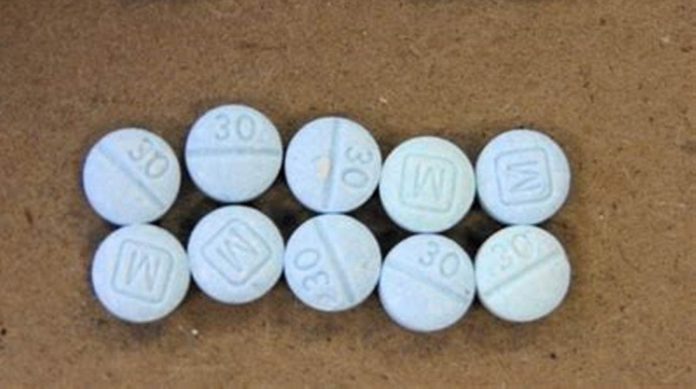From 2006 to 2012, 22,982,769 opioid pills were sold to patients in the Verde Valley, according to data released by the Drug Enforcement Agency.
A total of 70,846,215 pills were sold in Yavapai County during that time period, which averages out to 48 pills for each of the 211,033 residents of the county each year, according to the 2010 US Census.
The vast majority of the prescriptions were filled by local pharmacies, with a CVS in Camp Verde leading, having sold 4,031,400 doses over the seven-year period. A total of 13,341,260 doses were sold in Cottonwood, 4,965,360 in Camp Verde, and 4,675,929 in Sedona.
The data was released in July as part of a massive unified lawsuit in United States District Court for the Northern District of Ohio filed by over 2,000 different cities, towns and counties against a collection of opioid manufacturers including SpecGx, a subsidiary of Mallinckrodt; Actavis Pharma; Par Pharmaceutical, a subsidiary of Endo Pharmaceuticals; and Purdue Pharma. The lawsuit is collectively referred to as the National Prescription Opiate Litigation.
The data was released to The Washington Post after the newspaper filed with the court requesting the DEA’s internal data.
The Cottonwood Journal Extra accessed the data through the Washington Post’s website, which has provided the public with access to a search- able database of opioid prescriptions by location.
Public health advocates in Yavapai County have said that the high numbers of prescription opioids in the area sparked much of the increased use in street opiates such as heroin and fentanyl, as well as use of other drugs such as methamphetamine.
“Medical care providers were trained to treat pain, while opioid pharmaceutical producers were making the point that opioids were safe and non-addictive, and the best way to address pain — both short term and chronic pain,” Leslie Horton, director of Yavapai County community health services, wrote in an email. “There was little oversight on drug- shopping patients, who were either experiencing substance use disorder or selling the drugs that were prescribed in excess. This drove up a robust black market of opioids.
“Both drug seekers and drug naive youth were able to buy prescription opioids on the streets, find them commonly in medicine cabinets or dabble in them at parties.
“The increased access to these habit forming drugs both through prescription and illegal access dramatically increased the number of people who were experiencing substance use disorders.”
“What was happening with the prescription drug epidemic … people that would never think about a use disorder, they were getting prescribed,” said Merilee Fowler, executive director of the drug- prevention nonprofit MATForce. “I know people who went and got their wisdom teeth out and were given 60 Percocet or whatever that they really probably didn’t need, got high from it, and thought, ‘this is fun,’ and went down a path of addiction. So, it really opened the door to people that normally wouldn’t be in this situation with a use disorder because of being prescribed an opioid.”
In the years since the peak of opioid prescriptions, governments, public health advocates and the medical community have changed policy to limit prescriptions and prevent the abuse of medical opioids.
The passage of the 2018 Arizona Opioid Epidemic Act ensured that medical providers in the state can monitor prescriptions through the Controlled Substances Prescription Drug Monitoring Program, which allows doctors to check if a patient has been prescribed opioids by any other medical practitioner before filling out a prescription. According to Horton, all medical providers in the county are now using it.
However, public health advocates say that even though the abuse of prescription pills has been somewhat curbed, the ramifications of the drug crisis that started there continue to be felt in the area, having moved to street drugs instead of the doctor-prescribed pharmaceuticals.
According to Horton, in the years since opioid prescriptions have been limited, synthetic opioids designed to mimic prescription pills have become prevalent among illegal drug users. Horton also pointed to a rise of meth, which she said is “very cheap, extremely addictive and destroys people’s lives.”
“From my general impression, addiction is addiction,” Steps To Recovery Executive Director Damien Browning said.
Browning stressed that he had not collected any quantitative data on addiction in the area, but said that based on his impression of addicts coming into the sober living facility, current addicts in the area do not seem to have started with prescription pills.
“If they have a drug of choice, let’s say, if they don’t have that, they’re going to get something else,” Browning said. “If they can’t get heroin, they’re going to get a prescription for hydrocodone or oxycontin, or whatever it is. If they can’t have that, they’re going to go drink alcohol. That’s how most of the people I deal with are. They’re cross-addicted.”
“It’s not really the substance, it’s the need to avoid reality or feel a different way,” he said. “Once it was hard to get prescription drugs, people would go get street drugs.”



